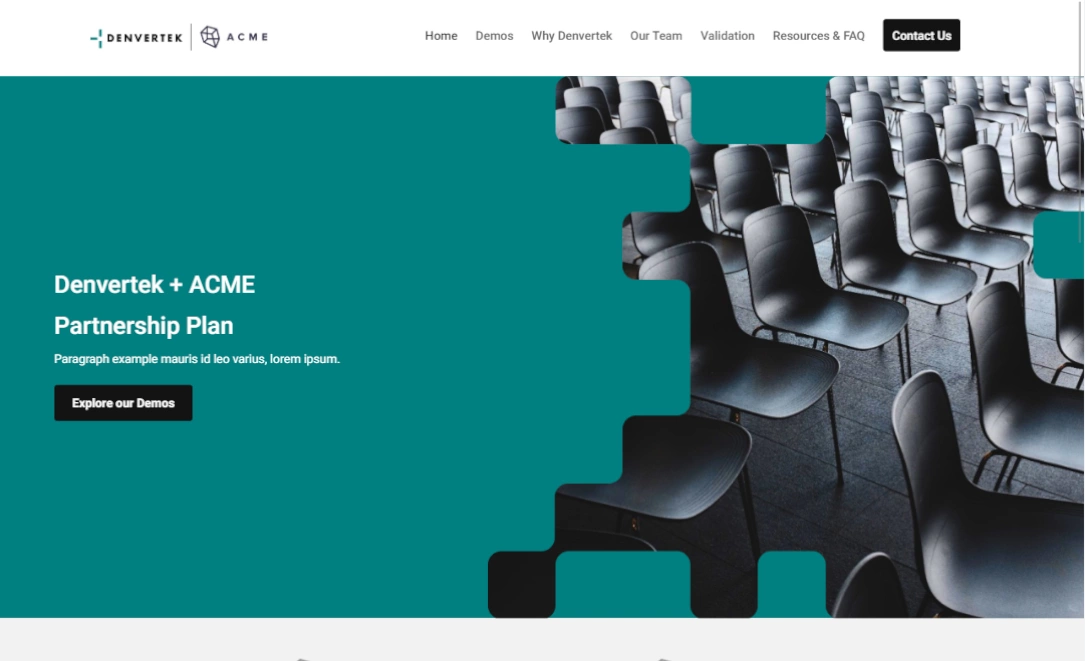Presenting a proposal in the business world can be as tough to do as it is important, whether it’s a business proposal, sales pitch, or a client quote. These proposals often involve face-to-face interactions with potential clients, or at minimum a video or phone call. That means it’s important to put your best face forward – quite literally.
Striking the right tone in your proposal can be tricky because you’ll often need to strike a careful balance between confidence, approachability, and honesty that persuades your audience while also putting them at ease. That’s no short order.
For many, there’s nothing more stressful than the thought of public speaking or presenting. If you want to get your proposal right, having a guide to help you along the way is invaluable. That’s why we put together a step-by-step guide to giving a proposal, from prep to presentation to follow-up.
A step-by-step guide to presenting a proposal
Most proposals, whether given in-person or virtually, can be broken down into three main stages: preparation, presentation, and follow-up. Let’s tackle each stage in turn:
Stage 1: Preparation
Preparation is vital. Having the right data to hand before you start writing is essential if you want to present a clear and compelling presentation.
Research your audience
As always, start with research. You need to understand who you’re talking to and leverage what you know about your audience from previous conversations. After all, if you’re presenting this shouldn’t be your first contact with them. You should be very familiar with their problems and challenges and ready to speak about how you can provide a solution or address them.
Do you already have an ideal customer profile you can reference? What about detailed notes from your previous discussions? You can also look to your marketing department for inspiration when it comes to the best, succinct ways to talk about your business.
Craft a clear agenda
Even if you’re only reviewing a simple client quote, setting an agenda is an important step. It can help you manage your time and give your audience clear expectations on what to expect from your meeting. They’ll typically be less likely to jump ahead asking unrelated questions if they know upfront you’re covering that topic later on. This is why you should also aim to send out your meeting agenda before your actual meeting.
A simple sample template might go something like this:
- Overall summary of the meeting (main goal, introductions, etc.)
- A brief review of background info (i.e., a short recap of previous convos or how the inspiration for the project)
- Specifics such as budget and timeline
- Next steps (i.e., clearly lay out what you’ll be doing and what the client/audience needs to do)
- Open time for questions
This will vary depending on your presentation, but it’s a good jumping-off point if you aren’t sure where to start.
Select an appropriate presentation format
Once you’ve researched and laid out what you’ll need to cover, it’s time to choose the best way to present that information. Many people will rely on a slide show, deck, or PowerPoint because it’s a great, straightforward way to walk an audience through your talking points.
You should also choose a clear, attractive template for your slides that fits within your brand guidelines. Consider supplemental materials such as photos and videos, but be thoughtful about whether their inclusion will enhance your presentation or distract from it.
Looking for a digital way to present your case to clients or audiences you can’t meet with in person? What about a way for them to take the presentation with them afterward? In these cases, a custom microsite could be a great choice.
Put together your presentation
Piecing your presentation together is the final step of your preparation phase. When plugging in your information, remember that a deck is a visual medium, so keep the copy light and the images engaging. Use charts and graphs where appropriate and spend time making sure they’re easy to read and comprehend.
You should also keep the copy short, snappy, and in a font size that’s easy to read on screen. Don’t cram it full of copy just because you can. This is your opportunity to highlight your main points and drill home your most important stats. The final product should be polished, professional, and beautiful.
Stage 2: Presentation
Armed with your research, your PowerPoint, and your agenda, you’re finally ready to present!
Open by naming a challenge
Because you’ll have already researched your audience, you can open your presentation by naming the challenge that speaks to your prospect’s needs. This shows them not only that you’re interested in their problems, but that you understand them. It also gives your audience a hook that can grab their attention.
This step aims to set up an important pivot in order to progress to the next step: selling a solution.
Sell a solution, not a product
Next, pivot from naming a challenge to talking about the solution – namely: you, your product or service, or your proposal. By choosing to frame what you have to offer as a solution to a problem, you give your audience more reason to care about what you have to say and a stronger reason to buy in.
This is also the stage during which you should be carefully laying out the benefits. If you were to list the benefits without this context, your offering would be less likely to hit home with your audience. People are inherently selfish when they’re being sold to, whether it’s an idea or a product. They want to know how what’s being offered can help them, not just why it’s great.
Lay out the next steps
After you’ve made your case, walk your audience through what comes next. Is there a decision-making process they need to follow? A timeline for implementing your proposal? A shipping date to expect? Whatever it is, now is the time to make sure they understand what’s next. You should also lay out a roadmap outlining when you’ll next contact them to follow up.
Stage 3: Follow up
The presentation doesn’t end just because you’ve reached the end of the slides – the follow up is crucial to sealing the deal.
Follow up promptly
Following up is important, but doing so promptly is even more important. You want to give your presentation time to marinate with your audience, but not enough time for them to forget about it or lose interest. Aim to follow up with your audience immediately afterward if it’s a sales pitch, within 24 hours for a client quote, and 3–5 days later for a business proposal.
At the end of your presentation, suggest a specific date and/or time to follow up. The more specific you can be, the better.
Reflect on the presentation proposal process
Now that the hard work is done, take some time to reflect on how your presentation went so you can take notes for next time. Think about strategies that seemed to work well, as well as parts that may have not gone as hoped. Taking time to reflect will help give you a plan of improvement for your next presentation.
Present via a compelling digital experience with custom microsites from Zoomforth
Zoomforth makes it even easier to share your most compelling info with audiences with powerful microsites. The full media library makes it simple to include whatever assets you need, and everything is fully mobile compatible so you know it’ll look great however your audience is viewing it.
Want to find out if a microsite is a right fit for your campaign? Try a free demo of Zoomforth today!



